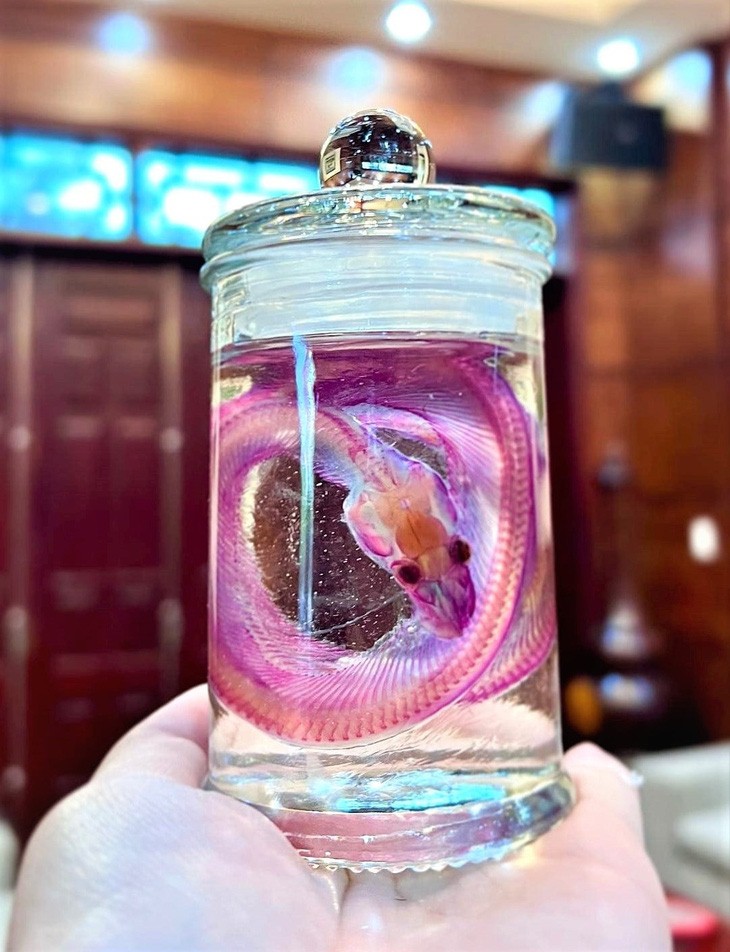Young Vietnamese obsessed with collecting natural specimens
The job of keeping specimens helps individuals earn thousands of U.S. dollars per month.
In a small garden on the terrace of Khai Hoan’s house in District 6, Ho Chi Minh City, insects have been gathering since early this year. Different species of butterflies and beetles come to reproduce on the trees and eventually die.
Previously, Hoan used to get rid of them.
However, he discovered that the dead insects maintained their shapes and colors for a long time.
This prompted him to start keeping them in glass jars.
Since the practice wasn’t popular at the time, Hoan had to learn how to make the specimens himself.
He found that most creatures can be turned into specimens, but they require sterilization, reinforcement, and drying.
The crucial requirement is to maintain their original shape and color.
All phases of the process are performed manually and with great attention to detail.
Hoan stated, “If the specimens get too dry, they’re easy to break. On the other hand, if they aren’t dry enough, they can develop mold.”
Another specimen enthusiast, Thanh Cong from District 8, Ho Chi Minh City, entered the hobby due to its aesthetic appeal.
He began with small specimens of lizards and beetles before progressing to fish, rabbits, turtles, snakes, and crocodiles.
He currently has around 100 specimens in his collection.
Cong clarified, “Many people wanted to buy the samples, but I won’t sell them. I make them for enjoyment and decoration and will give them to people I love.”
Although there are numerous specimen enthusiast groups on social media, they have relatively few members. The most populous group has around 7,000 members. Many individuals believe it is inappropriate to display dead animals in their homes.
|
|
| One of Tran Thi Mai Phuong’s specimens with dyed bones. Photo: Supplied |
Nevertheless, creativity knows no bounds, and the community of specimen enthusiasts is rapidly growing. They learn how to transform bones and the deceased bodies of animals and insects into decorations, and even valuable jewelry.
Khai Hoan mentioned that the cost of specimens is high. For instance, each butterfly specimen costs VND500,000 (US$20.5).
Specimens in which the flesh of animals is made transparent and the bones, tissues, and cartilage are dyed enjoy high demand. However, they also have high costs due to the several months required to complete each one.
Tran Thi Mai Phuong, a 19-year-old from Hai Duong Province, said that such products are expensive because the first phase involves the use of chemicals that are harmful to users. Additionally, there is a need for protective clothing and rooms with specialized equipment that not everyone has access to.
Nevertheless, these specimens continue to sell like hot cakes.
Phuong’s smallest specimen costs around VND1 million ($40.9), while specimens of dogs and cats can reach VND200 million ($8,186) each.
She currently possesses over 3,000 specimens with dyed bones.
On the other hand, Thanh Hoang, 27, has developed his own method of making specimens. He only preserves bones to create rings, bracelets, keychains, and artwork.
It takes him anywhere from 30 minutes to a week to finish a product.
His creations sell for prices ranging from VND300,000 ($12.3) to several million Vietnamese dong each. (VND1 million = $41).
Hoang shared, “I sell dozens of products per month.”
The post Young Vietnamese obsessed with collecting natural specimens appeared first on Vietexplorer.com.

Nhận xét
Đăng nhận xét